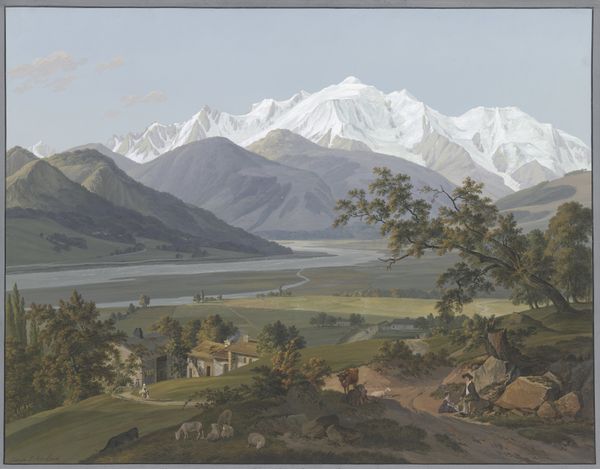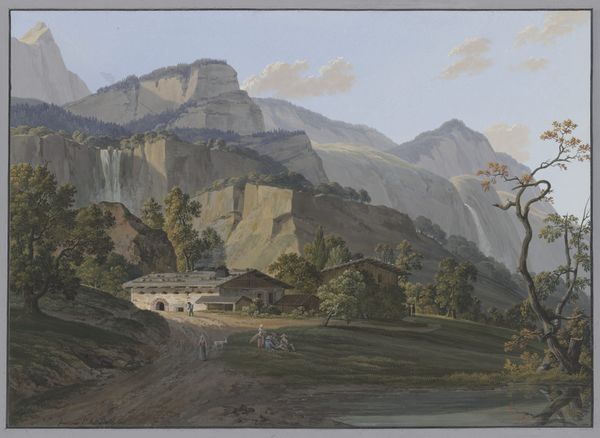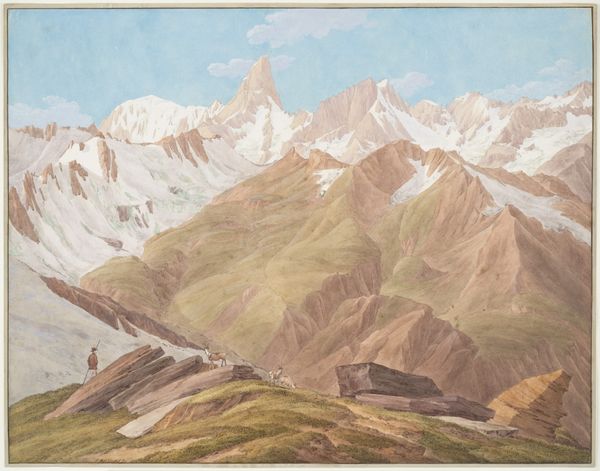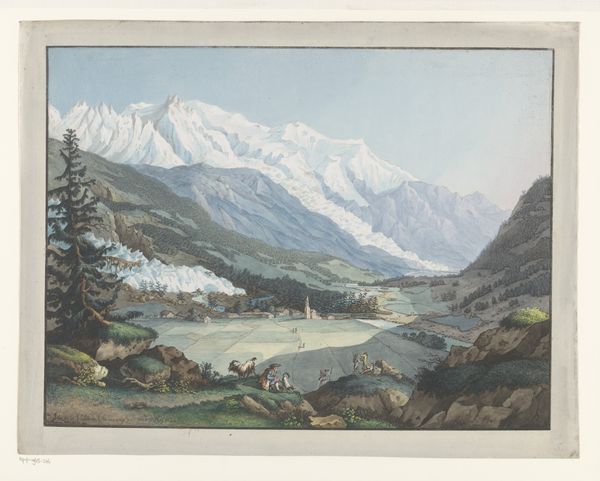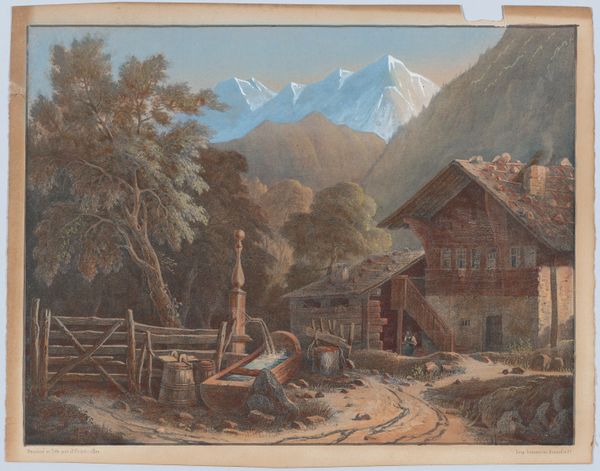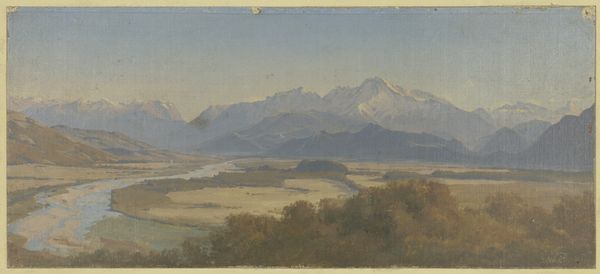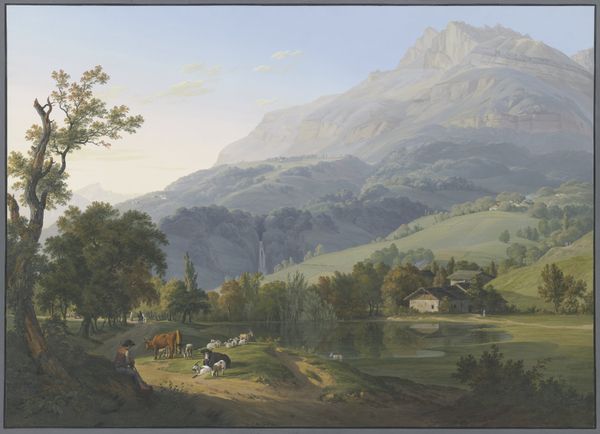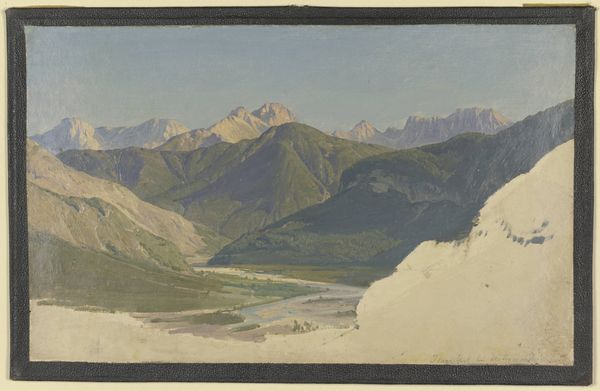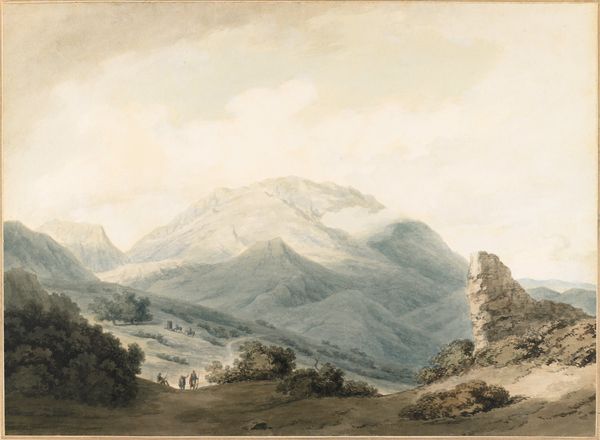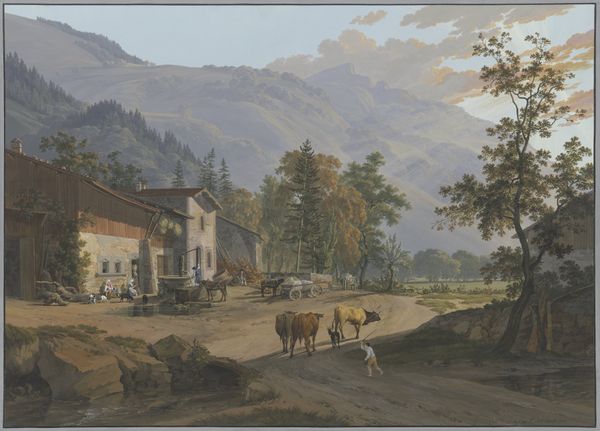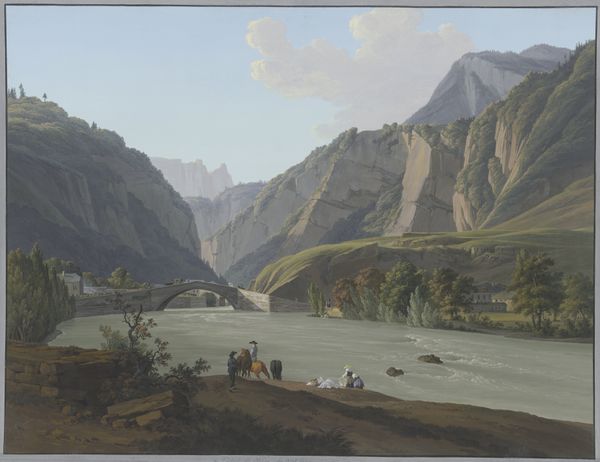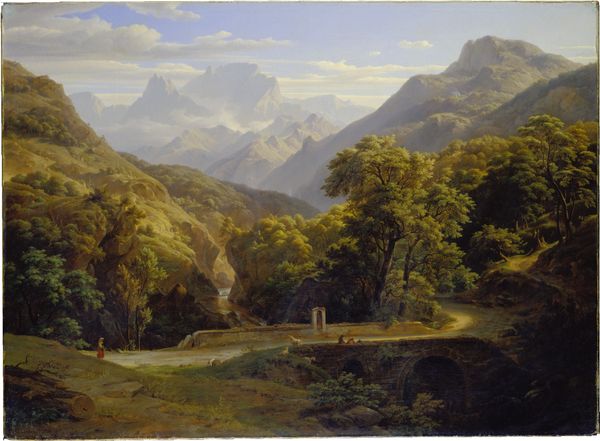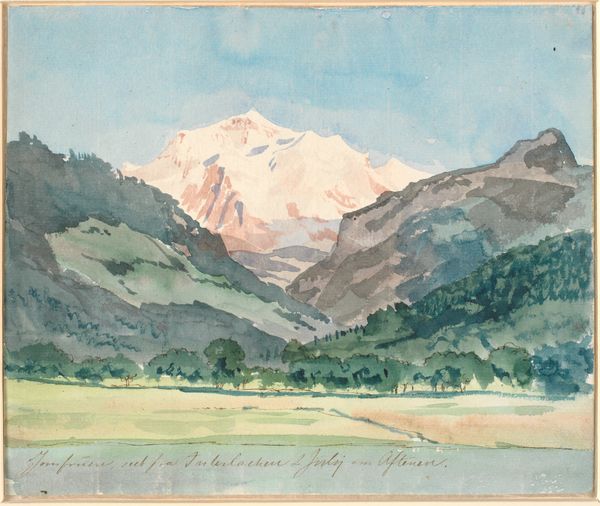
Vue de St. Gervais, de l'Aiguille blance, & du bon homme (Original Title) 1805
0:00
0:00
drawing, paper, watercolor
#
drawing
#
neoclacissism
#
16_19th-century
#
landscape
#
paper
#
watercolor
#
swiss
#
earthy tone
#
underpainting
#
cityscape
#
watercolor
#
realism
Copyright: Public Domain
Jean-Antoine Linck painted this vue of Saint-Gervais with watercolor and gouache. The monumental landscape and the tiny figures raise questions about the public role of art, and the politics of imagery. Painted in Switzerland in the late 18th or early 19th century, this view is a product of its time. The Romantic movement valued the sublime power of nature, yet it was also a period of social and political upheaval. The Alps became a symbol of national identity and resistance to foreign domination. Linck’s careful rendering of the landscape suggests a scientific approach to nature, while the small figures remind us of the human presence within it. The composition balances the awe-inspiring mountains with the everyday life of the villagers. To understand this artwork better, we might consult historical maps, travel accounts, and scientific studies of the Alps. By exploring these resources, we can appreciate how art reflects the complex social and intellectual currents of its time. Ultimately, the meaning of art is contingent on its social and institutional context, and the historian's role is to illuminate these connections.
Comments
No comments
Be the first to comment and join the conversation on the ultimate creative platform.
